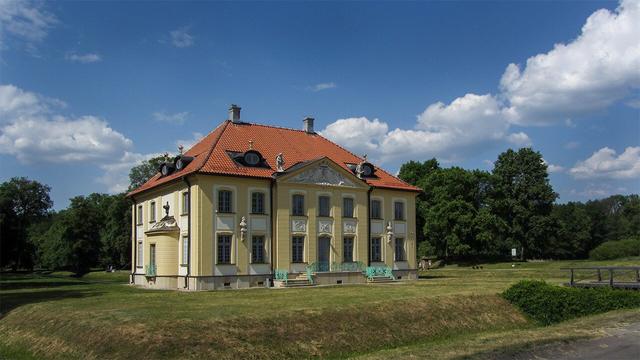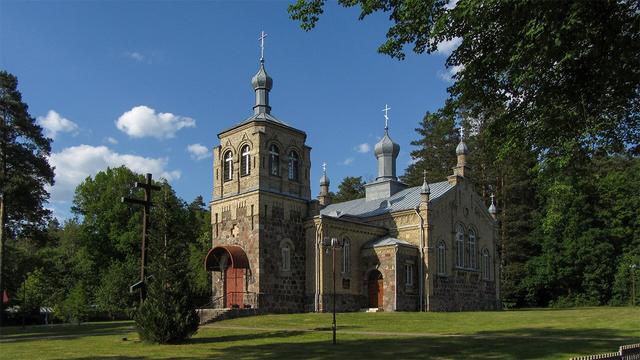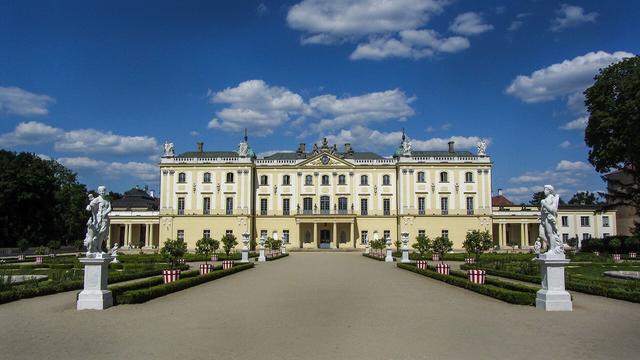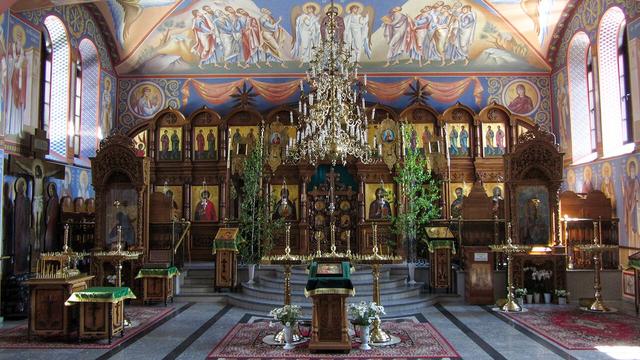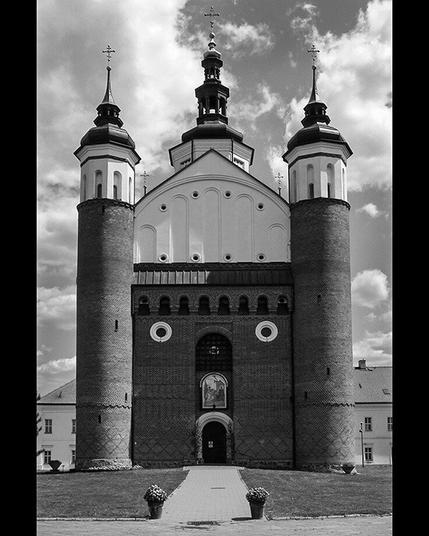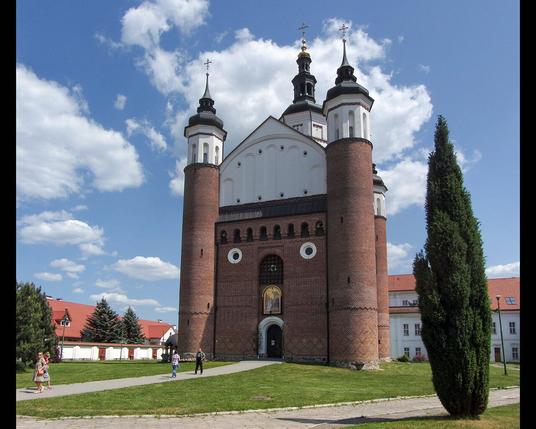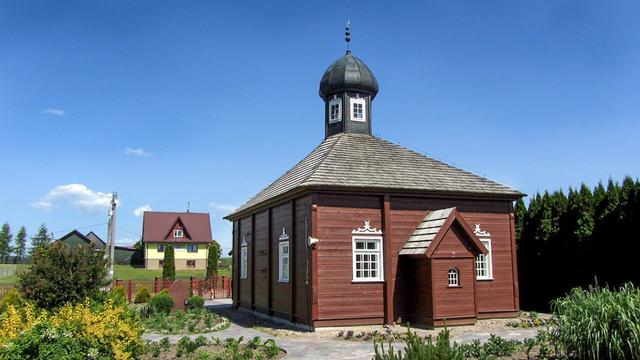Fajny dokument o festiwalu muzyki białoruskiej. Polecam
https://www.youtube.com/watch?v=tNSAKDEJh3o
#Podlasie #Belarus #documentary #muzyka
#podlasie
https://www.fakt.pl/wydarzenia/rosjanie-przyjechali-do-polski-sa-zachwyceni-ich-rodacy-sie-wsciekli-zdrajcy/hr9y3j6?utm_term=autor_3&utm_source=mastodon&utm_medium=social&utm_campaign=fakt-page-post Para Rosjan pokazała film ze swojej wycieczki do Polski. Nie wszystkim spodobał się ich zachwyt
A jeśli interesuje Was historia zespołu lub mikrojęzyka podlaskiego w którym wykonywane są utwory Sw@da x Niczos polecam artykuł Krytyki Politycznej: https://krytykapolityczna.pl/kultura/muzyka/lusterka-swdy-i-niczos-czyli-podlaski-coming-out/
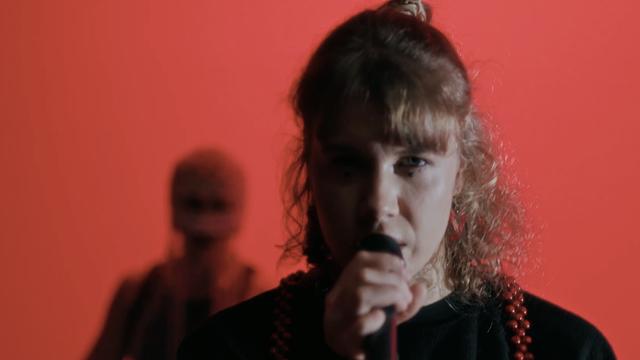
Jeżeli ktoś chce się dowiedzieć trochę więcej o tym o czym jest nowy album Patriarkh to tutaj jest całkiem niezły materiał
https://www.youtube.com/watch?v=AitT8Ig446s
#muzyka #metal #Podlasie @muzykametalowa
@Watchdog_Polska O, brzydkie słowo na "H" 
Podrzucam tagi #Podlaskie #Podlasie
Jest tu ktoś z Hajnówki? Widzimy się 28 stycznia, godz. 17.00!
Współorganizatorami spotkania są inicjatywa Wszystko, co chcielibyście wiedzieć o Hajnówce, ale boicie się zapytać oraz Miejska Biblioteka Publiczna w Hajnówce.
@jaredkostrzewa.bsky.social Bo to jedynki. Smutna rzeczywistość jest taka, że u nas na Podlasiu większość ludzi kupuje dwójki i trójki. Więc jedynki (i oczywiście zerówki - ekologiczne) są dla elity. Jak ktoś nie ma swoich kur, to jedynki są jak dla elity.
Dwie Lewe Ręce w Białymstoku! Jakub Dymek i Marcin Giełzak wezmą udział w otwartym spotkaniu #DLR w tę sobotę.
#Białystok, #Podlasie
#DwieLeweRęce #DLR
23,.11.2024,
Białystok
Restauracja Cechowa
ul. Warszawska 6
Dwie Lewe Ręce
Spotkanie otwarte
Między centrum a peryferiami: spór o polski model rozwoju
The church was built in the first half of the 20th century for the Orthodox parish established in 1900. Construction began in 1913 and was fully completed before 1939.
The temple was constructed in the shape of a Greek cross, using stone and facing brick, in an eclectic style. Inside, there is an iconostasis originating from a church in Grodno. The polychromes of the temple were created by Włodzimierz Wasilewicz in 1939.
#krolowymost #cerkiew #cerkiewprawoslawna #orthodox #orthodoxchurch #podlasie #podlaskie #kosciol #church #polska #poland #swiatynia #temple #chrzescijanstwo #christianity #wiara #religia #region #faith #view #widok #krajobraz #landscape #archotektura #architecture #architekturasakralna #sacralarchitecture
Jan Klemens Branicki bequeathed his estate to his wife Izabela, and after her death, to the Potockis. In the meantime, however, the Republic of Poland fell, and the residence came into the possession of Tsar Alexander I, which initiated a process of devastation and looting of the palace. The 19th century under Russian rule was not easy for the estate. After, among other things, the stripping of the palace’s structure, the demolition of the theater, the filling in of ponds, and the removal of sculptures, the building was turned into the Institute of Well-Born Young Ladies. During World War I, a field hospital operated here, and later the governor and various offices were based in the palace.
However, World War II turned out to be the most tragic period. In 1941, a massacre of the Jewish population took place in the areas adjacent to the estate. Three years later, in 1944, the Germans destroyed 70% of the palace; further destruction was caused by the Red Army.
After the war, the Branicki Palace was rebuilt over 14 years (1946-1960) under the supervision of engineers Stanisław Bukowski and Władysław Paszkowski. Reconstruction work continued as late as 2012 based on documentation and archaeological research. Today, it houses the rectorate of the Medical University.
#bialystok #podlasie #podlaskie #polska #poland #palac #palace #chateau #widok #krajobraz #landscape #architektura #architecture #renaissance #renesans
The first mentions of the palace date back to the 16th century - the design of the Gothic-Renaissance residence was attributed to Hiob Bretfus, who had other palace and castle projects to his credit. The palace acquired its final late Baroque appearance thanks to three architects: Tylman van Gameren, Jan Zygmunt Deybel, and Jakub Fontana. Although the name of the palace does not suggest it, it was built not only as a castle with a moat but also at the commission of the Wiesiołowski family.
The heir of the Wiesiołowski family, Krzysztof, died without heirs and had previously bequeathed the estate to the Republic of Poland. After the war, the castle was awarded to Stefan Czarniecki for his merits (along with Białystok). He, in turn, passed it on to his daughter, Katarzyna Aleksandra, who married Jan Klemens Branicki. Jan Klemens’s father commissioned Tylman van Gameren to remodel the castle. Thus, the Wiesiołowski Castle became the Branicki Palace.
The last reconstruction was carried out between 1750 and 1771 by the aforementioned Jakub Fontana. It was during this time that the palace gained its Rococo interiors, which can still be admired today; Fontana also brought sculptures by Jan Chryzostom Redler to the palace. The decor, full of stucco and paintings, harmonized with the Branickis’ interests - artistic activities flourished in the residence, where poets and writers gathered, and a theater, orchestra, and ballet company operated. The estate was visited by kings and rulers as well as envoys. In the 18th century, the first military school began operating near the palace.
#bialystok #podlasie #podlaskie #polska #poland #palac #palace #chateau #widok #krajobraz #landscape #brama #gate #architektura #architecture #renaissance #renesans
Built of red bricks between 1889 and 1890 within the monastery buildings. It serves the faithful (and monks) as a warm winter church. It was added to the existing southern monastic wing, connecting directly to it from the eastern elevation.
This is an oriented temple, rectangular in shape with a three-part structure typical of Orthodox churches.
The original iconostasis has not survived. The current iconostasis was created in contemporary times. The icons for this iconostasis were painted at the Iconographic Studio in Bielsk Podlaski, under the direction of Father Leoncjusz Tofiluk.
#suprasl #cerkiew #cerkiewprawoslawna #orthodox #orthodoxchurch #podlasie #kosciol #church #polska #poland #temple #swiatynia #chrzescijanstwo #christianity #monastery #monaster #wiara #religia #religion #ikony #ikonostas #iconostasis
History:
Part 1:
https://pixelfed.social/i/web/post/748918289537970258
Part 2:
https://pixelfed.social/i/web/post/749995383851361805
Part 3:
https://pixelfed.social/i/web/post/751467241215549768
#suprasl #cerkiew #cerkiewprawoslawna #orthodox #orthodoxchurch #podlasie #kosciol #church #polska #poland #temple #swiatynia #chrzescijanstwo #christianity #monastery #monaster #paintings #malowidla #malarstwo #painting #frescoes #freski
#Podlasie #Polska #Poland #ŻydowskiBiałystok #ŻydowskaPolska #JewishBiałystok #JewishPoland
Białostockie synagogi kiedyś i dziś. "#Białystok - najbardziej żydowskie miasto Europy". Co z tego zostało?
https://poranny.pl/bialostockie-synagogi-kiedys-i-dzis-bialystok-najbardziej-zydowskie-miasto-europy-co-z-tego-zostalo-zobacz-zdjecia/ar/c1-16496739
In September 1947, the Chief Directorate of Museums and Protection of Collections ordered the full reconstruction of the entire monastic complex.
After the war, an agricultural school operated in the monastery buildings, and from the 1980s, the buildings were gradually handed over to the Polish Autocephalous Orthodox Church, which carried out conservation and renovation work.
In 2021, the 37-year-long reconstruction of the main church of the monastery was completed. It is a structure that combines defensive and sacred functions, featuring elements of Byzantine and Gothic styles.
#suprasl #cerkiew #cerkiewprawoslawna #orthodox #orthodoxchurch #podlasie #kosciol #church #polska #poland #architektura #architekturasakralna #architecture #sacralarchitecture #temple #swiatynia #chrzescijanstwo #christianity #zamek #castle #monastery #monaster #russians #germans #history #historia
The monastery in Supraśl is one of five male Orthodox monasteries in Poland. Work on the main church, a defensive temple dedicated to the Annunciation, began here in 1510.
In 1635, the monastery came under the control of the Uniates and was administered by the Basilian order for nearly 200 years. This order significantly expanded the complex, adding new Baroque furnishings to the monastery church and a three-tiered iconostasis with a crowning element.
In 1824, after Supraśl fell under Russian rule, the monastery was taken over by the Russian Orthodox Church. The male monastery functioned until 1915, when the monks went into exile.
During the interwar period, the monastery buildings belonged to the Salesians.
From 1939 to 1941, the monastery was devastated by the Soviet troops stationed there. A kitchen was set up in the Church of St. John the Theologian, and a forge was established in the main temple. Soldiers removed icons from the building and destroyed the Baroque iconostasis.
In 1944, retreating Germans blew up the main church and forced the monks to leave the monastery. The remains of the temple were secured as a permanent ruin after World War II.
#suprasl #cerkiew #cerkiewprawoslawna #orthodox #orthodoxchurch #podlasie #kosciol #church #polska #poland #architektura #architekturasakralna #architecture #sacralarchitecture #temple #swiatynia #chrzescijanstwo #christianity #zamek #castle #monastery #monaster #russians #germans #history #historia
The second mosque located on the “Tatar Trail” of the Podlaskie Voivodeship, much younger than the mosque in Kruszyniany, built in 1873. The temple that was originally located in this place completely burned down. Rebuilt - it was devastated by the Germans, who used it as a field hospital during World War II. Over the years it was renovated many times.
The mosque is made of wood, a low square building, distinguished from the surrounding houses of Podlasie by a turret (minaret) with an onion-shaped dome and a crescent-shaped tip.
The interior of the mosque consists of 3 parts. First, we enter the vestibule, where we must take off our shoes. During prayer, women go to the female part, i.e. Babiniec, which is separated from the male part by a wooden wall with a gap. It is covered by a transparent fabric through which the ladies observe the service.
The most important place in the mosque is the mihrab, a small recess in the wall that always points in the direction of Mecca. Equally important is the minbar, i.e. the type of pulpit from which the imam delivers his teachings. The mosque’s floors are covered with soft carpets, the walls are decorated with colorful paintings, photos and muhirs, i.e. quotes from the Koran, the holy book of Muslims.
#bohoniki #meczet #mosque #tatarzy #tatars #tartars #poland #polska #architektura #architecture #sacralarchitecture #architekturasakralna #woodenarchitecture #architekturadrewniana #polishtatars #polishtartars #polscytatarzy #podlasie #widok #landscape #krajobraz #swiatynia #temple #budynek #building








